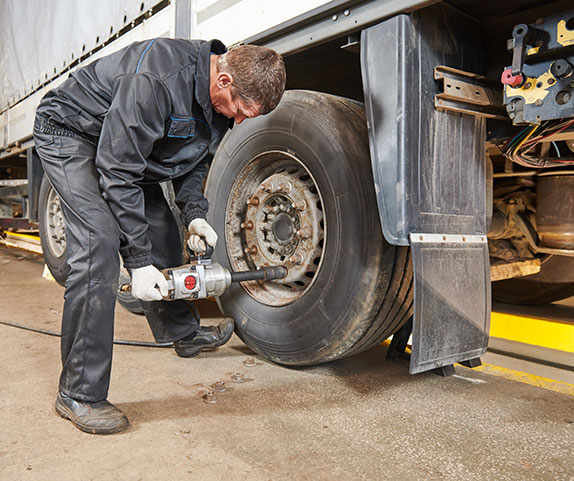Tire Solution: The Effect of Climate Condition
When it concerns ensuring optimal performance and safety when traveling, recognizing the impact of climate condition on tire solution is crucial. From scorching heat to icy roadways, each climate element can substantially influence tire capability and general driving experience. By delving right into the results of varying climate condition on tires, drivers can acquire useful understandings that may improve their lorry's efficiency and longevity. In this conversation, we will certainly check out the detailed connection in between weather and tire service, clarifying the relevance of weather-specific tire maintenance techniques and factors to consider.
Warm and Tire Efficiency
When revealed to high temperatures, tires experience modifications in efficiency that can dramatically influence automobile safety and security and handling. The warm produced from long term driving or hot climate conditions creates the tire rubber to soften, bring about minimized tread life and increased wear. As the rubber ends up being softer, the tire's grasp when driving reduces, influencing braking ranges and general traction. In extreme cases, excessive heat can also cause tire blowouts, positioning a serious security danger to the car and its owners.

Cold Weather Condition Impacts
Cold weather conditions can have a substantial impact on tire efficiency and security. In chilly climate, tires may also lose air pressure more swiftly, which can influence dealing with and fuel performance.
To mitigate the results of cool climate on tires, it is important to on a regular basis inspect tire pressure and inflate them to the manufacturer's recommended degrees. Making use of wintertime or all-season tires made for cold weather condition problems can likewise improve grip and grasp on icy or snowy roads. Correct tire upkeep, including normal inspections for wear and damages, becomes much more vital throughout chillier months to ensure optimum efficiency and safety.
Rainy Issues Impact
Throughout stormy conditions, tire performance and safety and security can be dramatically affected by the wet road surface areas and decreased presence. The step pattern of tires plays a critical duty in preserving traction on wet roadways. Tires with worn-out footsteps are more vulnerable to hydroplaning, where a layer of water accumulates in between the road and the tire surface area, leading to loss of traction. To battle this, vehicle drivers must consistently inspect their tires for adequate tread deepness and consider investing in tires specifically designed for damp conditions.
Additionally, wet weather condition can also reduce presence, making it testing for vehicle drivers to see the road ahead clearly (GMC Tire Service). In such problems, it is vital to adjust driving speeds appropriately and preserve a safe adhering to range to permit unexpected stops. Properly filled with air tires can additionally assist in preserving control on damp roadways by offering much better handling and hold
Snow and Tire Safety
When driving in snowy conditions, having the best tires can make a significant distinction in safety and efficiency. Winter tires are made with unique rubber substances and walk patterns to give far better traction on snow and ice compared to all-season tires.

Moreover, vehicle drivers should consider installing tire index chains in extreme snowy conditions. Tire chains provide extra traction by clutching the snow and ice, improving stability and control. However, it is necessary to adhere to manufacturer directions when using and setting up tire chains to avoid damage to the tires and vehicle. By choosing the best tires, maintaining proper inflation, and taking into consideration additional grip help like tire chains, vehicle drivers can boost their safety when navigating snow-covered roadways.
Weather-Related Tire Maintenance
When faced with various weather, appropriate tire upkeep ends up being a vital element of car safety and performance. Weather-related tire maintenance encompasses a variety of practices targeted at guaranteeing optimum tire function and durability in different climate situations. One vital facet of weather-related tire maintenance is tire pressure guideline. Fluctuating temperature levels can cause tire stress to vary, influencing traction and fuel performance. Frequently checking and readjusting tire pressure according to maker recommendations is essential for safe driving in transforming weather. Additionally, tire walk depth plays a significant role in handling different weather elements. Tires with ample step depth provide better grasp on damp or icy roads, reducing the danger of hydroplaning or skidding. When step wear reaches a particular depth is essential for keeping traction and security in adverse weather condition, checking tire walk frequently and replacing tires. By focusing on weather-related tire upkeep, motorists can boost safety, boost lorry performance, and prolong the life-span of their tires.
Verdict
In verdict, weather condition conditions have a considerable effect on tire efficiency and safety and security. From warmth influencing tire stress and wear to winter minimizing traction, it is vital to take into consideration the weather condition when keeping and utilizing tires. Rainy problems can reduce hold and bring about hydroplaning, while snow can click for info boost the risk of crashes that site if tires are not appropriately furnished. Weather-related tire maintenance is essential in guaranteeing optimum efficiency and safety when driving.
In this conversation, we will discover the intricate connection in between weather condition conditions and tire solution, dropping light on the significance of weather-specific tire upkeep methods and factors to consider.
